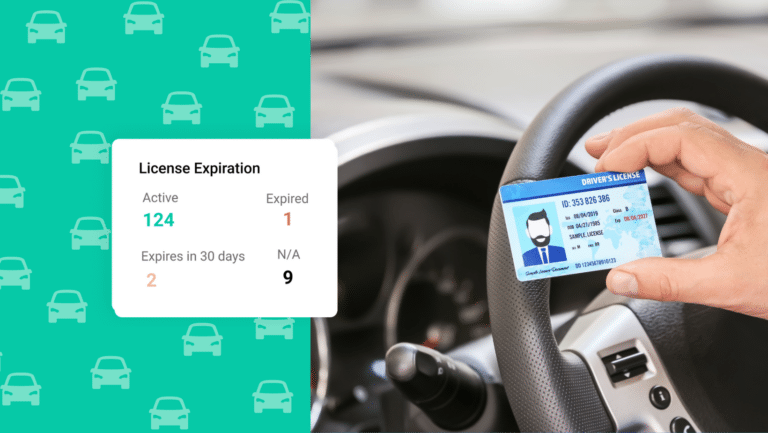MVR Checks: Annual or Quarterly?

Motor vehicle record (MVR) checks are the basis of any fleet safety program. In fact, checking MVRs is a good business process for anyone who has employees drive for business purposes- even their own personal vehicles. MVR checks give you instant visibility into your employees’ driving history and whether or not they have any violations, suspensions, etc. Studies show drivers with multiple violations are more likely to be involved in future accidents. This correlation supports the importance of checking MVRs constantly. But, the question remains: how often should MVRs be checked?
The MVR report provides key insights into an employee’s driving history. This includes things such as accidents, convictions, moving violations, suspensions, etc. A driver with multiple violations is more likely to be involved in future accidents. This unquestionable correlation supports the importance of checking MVRs constantly. The question is: how closely should MVRs be checked?
While the average company checks MVRs annually, more proactive companies check MVRs once per year for low-risk drivers, and twice yearly for high-risk drivers. The problem with this basic approach is that a driver’s behaviors and unnoticed violations could expose a company to accident liability due to negligence.
Why Driving History Matters
The American Transportation Research Institute performed a study identifying the specific driving behaviors that are most predictive of future truck crash involvement. The chart below shows the results of the study:
| Specific driving behavior | Increase in Crash Likelihood |
|---|---|
| A Failure to Use / Improper Signal conviction | 96% |
| A Past Crash | 88% |
| An Improper Passing violation | 88% |
| An Improper Turn conviction | 84% |
| An Improper or Erratic Lane Change conviction | 80% |
| An Improper Lane / Location conviction | 68% |
| A Failure to Obey Traffic Sign conviction | 68% |
| A Speeding More Than 15 Miles over Speed Limit conviction | 67% |
| Any conviction | 65% |
| A Reckless / Careless / Inattentive / Negligent Driving conviction | 64% |
Long Gaps between MVR checks is Risky
The reality is that checking MVRs once, twice, or even quarterly leaves a significant gap in information that can jeopardize a company’s image and bottom line. A few years ago, an R&E Logistics driver was traveling 80 mph in a 55 mph zone resulting in the tipping over and tossing of its load of lumber and unfortunately killing two drivers. The driver was found to have high levels of alcohol in his blood and multiple federal hours-of-service violations. The police also found that the driver had a recently suspended license in Louisiana and a revoked license in Virginia. An MVR report pulled by R&E logistics a few months prior may have shown Weddle’s record as clean, giving the company a false sense of safety for the remainder of the year.
This example unfortunately can happen to any company. It shows that anything less than continually monitoring MVRs leaves a significant risk for motor carriers.
From MVR Checks To Continuous Monitoring
With some states charging as high as $27.00 per MVR, it doesn’t make financial sense to check MVRs every month just to stay up-to-date on employees’ driving behaviors. The time, cost, and effort it takes to collect, sort, and analyze all those MVRs is also burdensome. So how is it possible to obtain real-time information about changes to a driver’s MVR in the most time-effective way possible? MVR Monitoring is a system that monitors employees’ MVRs continuously and notifies managers when new violations and suspensions appear in a driver’s record. The system links directly with DMVs to monitor changes in driver licenses and finds adverse actions that may expose your organization to liability and accident risk. The Employer Notification System (ENS) is a simple and cost-effective tool ensuring a rock-solid safety program.
Want to learn more about MVR Monitoring vs. Annual MVRs? Download our Case Study or contact us to schedule a demo.
*We are not lawyers. Consult with your legal counsel to ensure your processes and procedures meet/ or exceed safety standards and compliance regulations. Please read our legal disclaimer.






